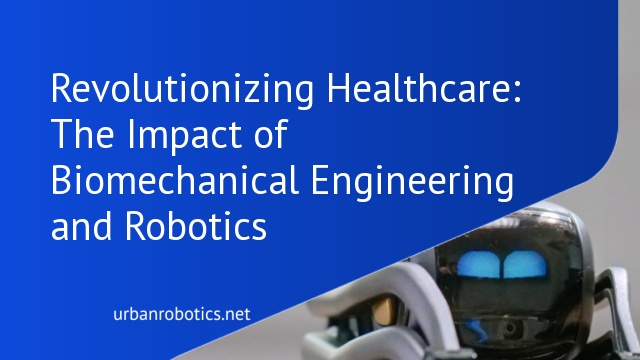Understanding Biomechanical Engineering
Biomechanical engineering integrates biology and mechanical engineering to understand the mechanics of human movement. It focuses on applying principles of mechanics to biological systems. Researchers study musculoskeletal function and create models of movement.
Key areas include the analysis of forces on the body, the design of prosthetics, and the development of medical devices. These devices enhance mobility and quality of life, particularly for individuals with physical impairments.
Biomechanical engineers often collaborate with healthcare professionals, ensuring that innovations meet clinical needs. By understanding the body’s mechanics, we gain insights into injury prevention, rehabilitation, and performance enhancement.
Utilizing computational simulations, biomechanical models predict outcomes related to various medical conditions. These models help in designing better treatment plans and optimizing surgical procedures.
The field advances through interdisciplinary research, combining elements of mechanical engineering, biology, and medicine. This synergy propels the development of cutting-edge technologies in prosthetics, robotics, and wearable devices, driving continuous improvement in healthcare and human movement studies.
Evolution of Robotics in Biomechanical Engineering
Biomechanical engineering and robotics have evolved together, enhancing healthcare through innovative solutions. This partnership offers improved prosthetics, advanced wearable devices, and smart surgical tools.
Early Innovations
In the 1960s, initial robotic prosthetics entered the scene, offering basic motor functions for amputees. Advancements continued in the 1970s with the development of myoelectric limbs, controlled by muscle signals. These early innovations laid the groundwork for integrating robotics with biomechanical engineering, enabling basic yet functional prosthetic support.
Modern Milestones
Today, biomechanical robotics includes sophisticated prosthetics with advanced sensors and actuators. Bionic limbs, such as those developed by Open Bionics, provide refined movements. Wearable exoskeletons by companies like Ekso Bionics facilitate mobility for spinal injury patients. Integrating AI and machine learning enhances these devices, improving user adaptability and functionality.
Key Technologies and Methods
In the fusion of biomechanical engineering and robotics, several key technologies and methods drive innovation and practical applications. They are integral to developing advanced prosthetics, wearables, and surgical tools.
Sensors and Actuators
Sensors and actuators form the core of biomechanical robotic systems. Sensors (e.g., pressure, motion, and EMG) detect physical signals from the human body, allowing for precise control of prosthetic limbs. Actuators convert electrical signals into mechanical motion, enabling movement. Together, these components enable real-time feedback and adaptive functionality in robotic devices, enhancing user experience and improving performance.
Biomechanics Simulation Software
Biomechanics simulation software aids in designing and testing biomechanical systems. Tools like OpenSim and AnyBody Modeling System allow researchers to create detailed models of human movement. These simulations help optimize prosthesis design, predict surgical outcomes, and plan rehabilitation strategies. By using virtual environments, we reduce the need for physical prototypes, speeding up the innovation process and improving accuracy.
Artificial Intelligence Integration
Artificial intelligence (AI) integration elevates the functionality of biomechanical and robotic systems. Machine learning algorithms analyze sensor data, improving the adaptability and responsiveness of prosthetics and wearables. AI enhances predictive modeling in biomechanics, enabling personalized medical devices that evolve with user needs. By incorporating AI, we create smarter, more intuitive systems that enhance the quality of life for individuals with physical limitations.
Applications in Medicine
The integration of biomechanical engineering and robotics has significantly advanced medical applications, enhancing patient care quality and treatment outcomes.
Prosthetics and Orthotics
Prosthetics developed with biomechanical engineering and robotics offer greater functionality and mobility than traditional models. Using advanced sensors and actuators, these prosthetics provide real-time feedback and adaptive responses, allowing users to perform complex tasks. For example, myoelectric prosthetics use muscle signals to control limb movements, improving user experience and dexterity.
Rehabilitation Robotics
Rehabilitation robotics utilizes biomechanical engineering to aid recovery for individuals with physical impairments. Robotic exoskeletons and devices enable precise, repetitive movements crucial for effective rehabilitation therapy. For instance, robotic-assisted gait training helps stroke patients regain mobility faster than traditional methods. These devices, equipped with sensors and intelligent algorithms, track progress and adjust therapy plans for optimal recovery.
Future Trends and Innovations
As we look ahead, biomechanical engineering and robotics are poised for groundbreaking transformations. Emerging trends promise to refine human-robot interactions and revolutionize prosthetic designs and medical devices.
Human-Robot Interaction
Researchers continually enhance human-robot interaction to optimize usability and responsiveness. Efforts focus on intuitive interfaces and adaptive algorithms to ensure seamless communication between users and robots. For example, advancements in brain-computer interfaces (BCIs) allow direct control of prosthetic limbs via neural signals. Additionally, haptic feedback systems provide sensory information, enabling amputees to perceive touch and pressure, greatly improving their daily interactions.
Advanced Materials and Manufacturing Techniques
Innovations in materials science and manufacturing revolutionize prosthetics and wearable devices. Engineers employ lightweight, durable materials like carbon fiber composites and shape-memory alloys to enhance device performance. For instance, 3D printing technology enables customized prosthetics tailored to individual anatomical requirements. Additionally, bio-compatible materials ensure better integration with human tissues, reducing the risk of rejection and improving comfort and functionality. These advancements lead to superior, personalized medical solutions.
Conclusion
Biomechanical engineering and robotics are transforming healthcare and human motion understanding. Their synergy is pushing the boundaries of medical innovation, offering unprecedented solutions for individuals with physical limitations. By leveraging advanced technologies like sensors, AI, and 3D printing, we’re seeing more functional and adaptive prosthetics, wearables, and surgical tools.
As we continue to refine human-robot interactions and develop intuitive interfaces, the potential for revolutionizing patient care is immense. The future holds promising advancements that will further enhance the quality and personalization of medical treatments, ensuring better outcomes for patients worldwide.





